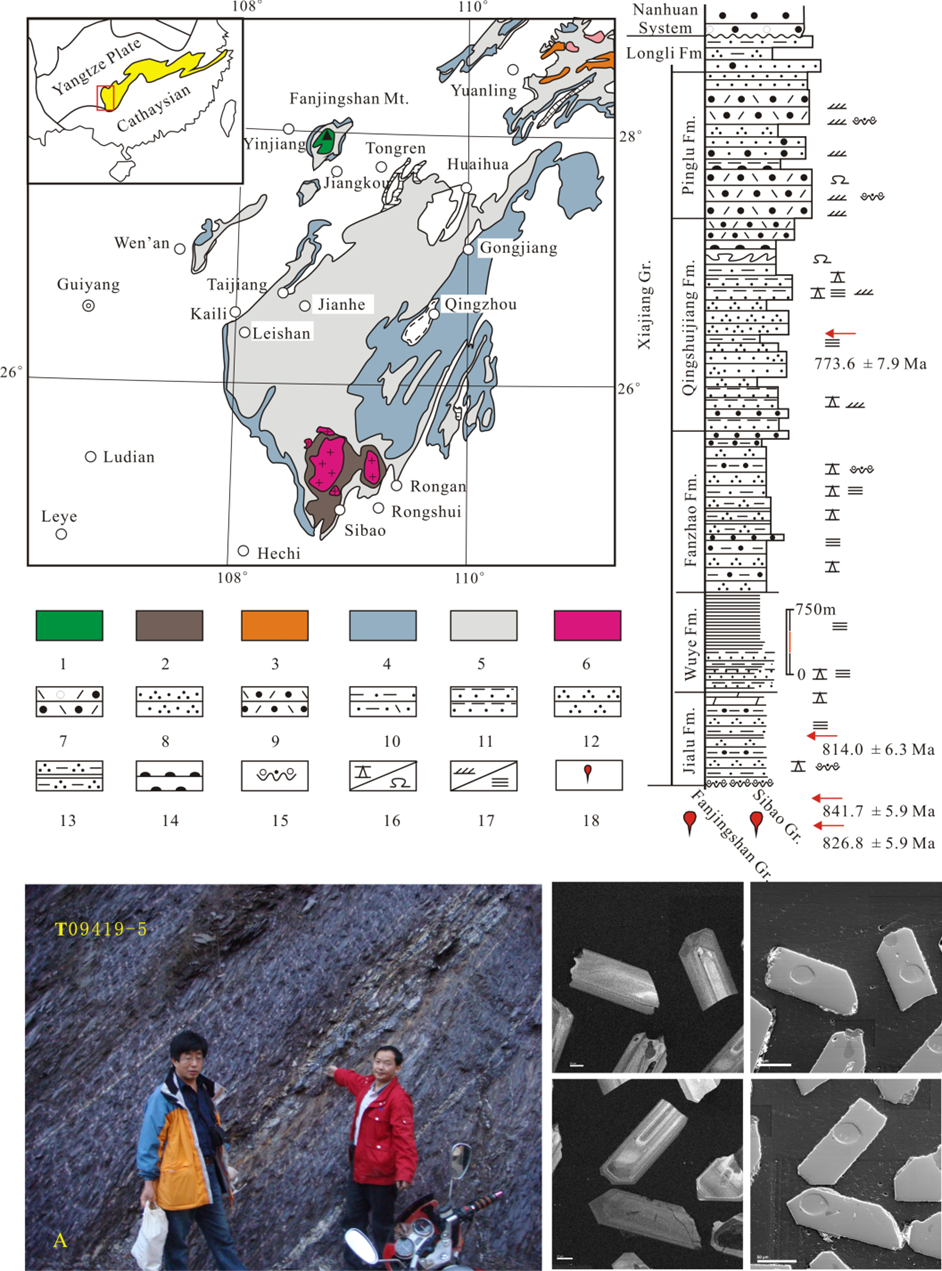Wuye Fm
Type Locality and Naming
East Guizhou. The Wuye Fm was named by the No. 108 Team of Guizhou Bureau of Geology in 1962, which was quoted in the Regional Survey Report (Guidebook of 1:200000 Scale of the Geological Map of Jianhe Sheet) in 1965; The naming section is located in Wuye, Congjiang County, Guizhou Province; The reference section is located at Queniao, Leishan County, Guizhou Province. Lower-middle formation in the Xiajiang Gr.
Synonym: (乌叶组)
Lithology and Thickness
The Wuye Fm is subdivided into two members. First member consists of light gray, gray green and gray silty slate, phyllitic slate and phyllite, interbedded with blasto-siltstone and fine-grained sandstone, with blasto-silty to fine-grained sandstone, interbedded with blasto-tuff at the top of the member. In the Zhangjiaba area of Yinjiang, northwest of Fanjing Mountain there is lesser phyllites, and it is interbedded with purple red or gray purple slate in the middle and lower parts. In the Leigongshan district, the phyllite is common with minor sericite schist, 450-750 m in thick. Second member consists of dark gray and gray black sericite slate, phyllitic slate, phyllite, interbedded with dark gray blasto-siltstone to fine-grained sandstone and minor blasto-tuff. In Zhangjiaba district, the phyllite is less, with sometime purple red slate in the lower part, 200-250 m thick. In Leigongshan district there is more phyllite, interbedded with minor small marble lenses, 630-770 m thick. The thickness of the upper member varies considerably from 800 to 1800 meters.
[Figure: The Stratigraphic column of the Xiajiang Gr. in Guizhou Province. A-Volcanic ash beds in the Jialu Fm and zircons from the ash bed.]
[Figure: Lithology of Wuye Fm]
Relationships and Distribution
Lower contact
Overlies the Jialu Fm.
Upper contact
Disconformably overlain by the Fanzhao Fm.
Regional extent
Eastern Guizhou Province.
GeoJSON
Fossils
The microplants are very abundant: Asperatopsophosphaera, Dictyosphaera, Kildinella, Leiofusa (?), Leiominuscula, Pseudozonosphaera, Quadra- timorpha, Trachysphaeridium etc. The Trachysphaeridium has largest number of species developed.
Age
Depositional setting
The formation shows the nearshore deposition in the Zhangjiaba district, but in Leigongshan district, the First member reflects neritic facies deposition in deeper water. The Second member shows the deposition a deep-water condition of reduction, which is interpreted as the lower part of shelf and continental slope.
Additional Information

